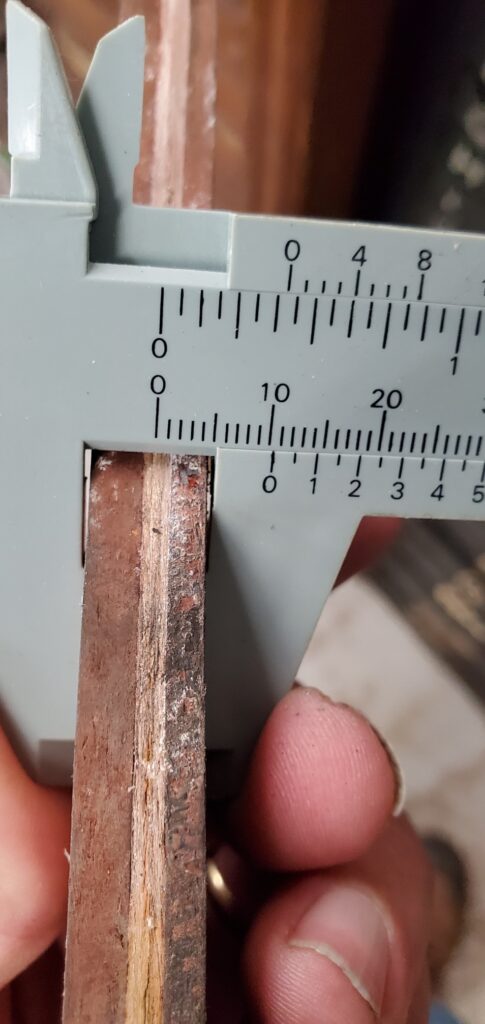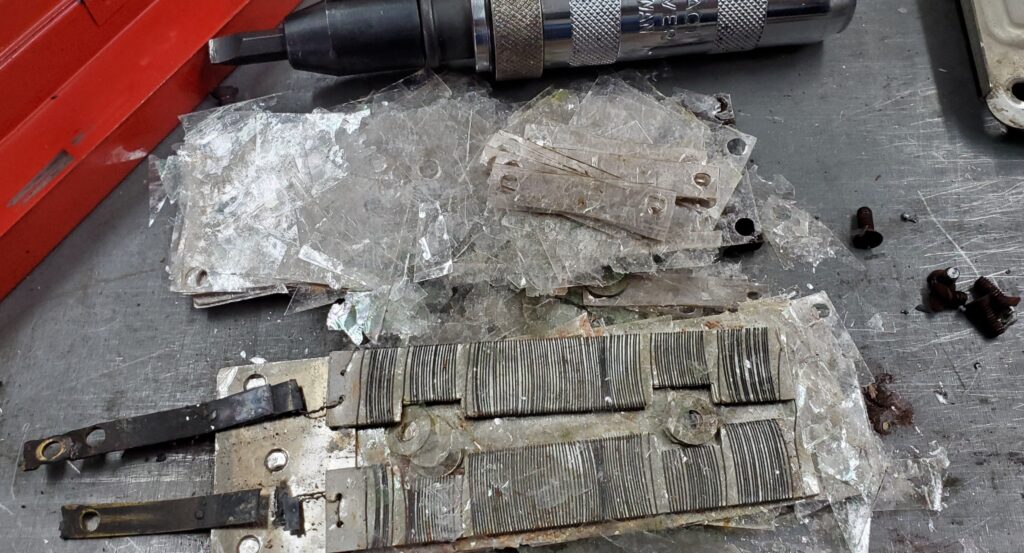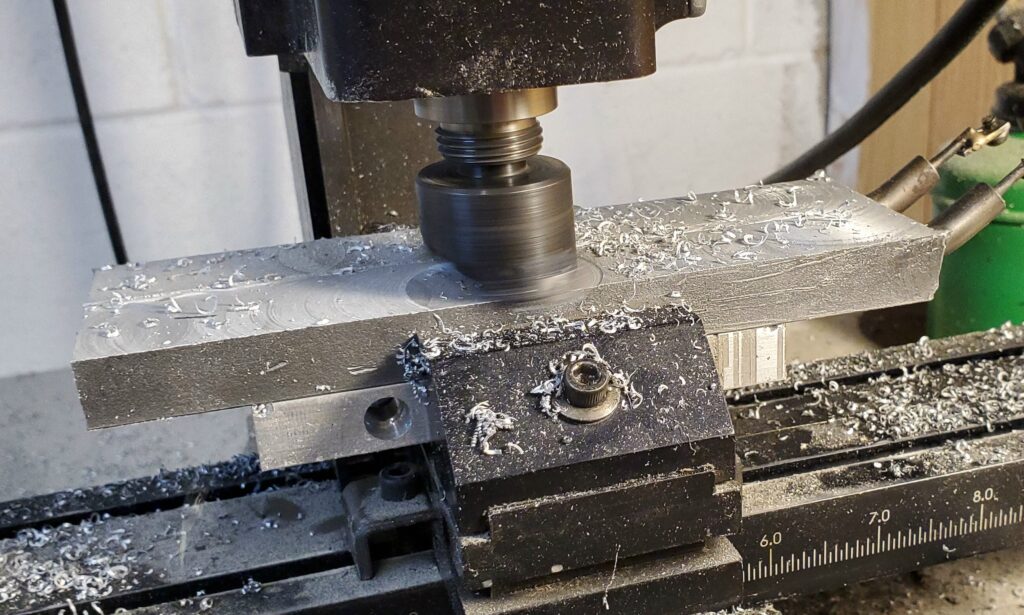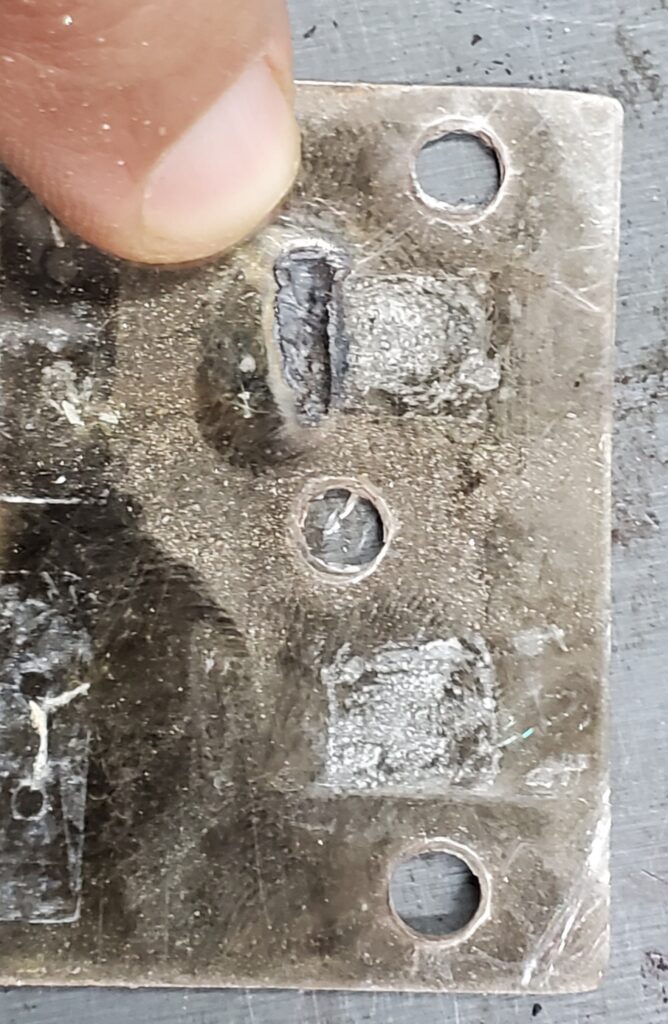Last year I had noticed that the Ludlow Typograph Model L at the Mackenzie Printery was taking a long time to warm up and was also producing poor slugs unless it was casting more or less continuously. Some investigation with an ohmmeter revealed that the throat heater circuit was open. The pot on the Ludlow has three heaters, a main one for the pot proper, one for the mouthpiece that contacts the mould when casting, and one for the throat which is a passage between the pump and the mouthpiece. With the throat heater out of commission, the only thing keeping the type metal in the throat molten was conduction from the main pot or constant flow of metal from the main pot by casting a lot.
The Printery had a collection of used and new-old-stock Ludlow throat heaters, part of a donation of items from Ruth Black a few years ago, so I started working on replacing the heater. This requires removing the pot, which in turn pretty much requires draining the pot (though even then it is still quite heavy). Once the pot is removed it can be flipped over and the covers for the throat heater and underside wiring can be removed. I left the wiring from the controller to the pot connected, so I had the pot perched on a chair behind the caster. I got the old heater out. It consists of a sandwich of two steel plates with mica insulation and the heating wires in between. I later did a post-mortem on this heater—see below.
I got the old heater out. It consists of a sandwich of two steel plates with mica insulation and the heating wires in between. I later did a post-mortem on this heater—see below.
This is quite different from any of the replacement heaters we had: they were all tubular heating elements cast into a rectangular block of metal, perhaps zinc. They were also generally thicker than the old heater (they were not all the same thickness) and would not fit into the cramped slot provided for the heater in the pot. I took a rough measurement of the thickness of the old heater and used my mill to thin out the chosen replacement heater, taking care not to cut into the tubular heater element embedded in the metal block. The particular heater was chosen because the angle of the emerging terminals seemed to be the best fit into the cramped cavity under the pot.
I took a rough measurement of the thickness of the old heater and used my mill to thin out the chosen replacement heater, taking care not to cut into the tubular heater element embedded in the metal block. The particular heater was chosen because the angle of the emerging terminals seemed to be the best fit into the cramped cavity under the pot.

The heater ready to install. There is a small steel pin, visible near the top, which keeps the heater centered when the metal block is cast.
I installed the new heater, which involved some fiddling to get the covers to fit. The cover for the throat heater is designed to sort of wedge in place and hold the heater tight against the internal surface of the throat for good thermal transfer, and there is a thin layer of thermal insulation between the heater and this cover which had to be just right to get the cover installed.
After this fix, the Ludlow heats up and casts good slugs again, even the first slug of the day.
I later took apart the old heater. The two side plates were held together by seven flat-head steel screws, which required a manual impact screwdriver to remove (several actually snapped off). With one of the plates removed, the heater fell apart into a pile of mica along with the actual heater strips. This mica was likely more solid when new but decades of heat and humidity caused it to delaminate and fall to pieces. The fault in the heater was not the heating wire, but the connection to the the lower terminal; you can see in the photo how this terminal tab is disconnected from the heating wire. The mica insulation around the terminals was less crumbly and stayed more or less as one piece, but it shows evidence of this connection overheating and probably arcing as it failed—it was actually hot enough to melt the mica!
The fault in the heater was not the heating wire, but the connection to the the lower terminal; you can see in the photo how this terminal tab is disconnected from the heating wire. The mica insulation around the terminals was less crumbly and stayed more or less as one piece, but it shows evidence of this connection overheating and probably arcing as it failed—it was actually hot enough to melt the mica!



Leave a Reply